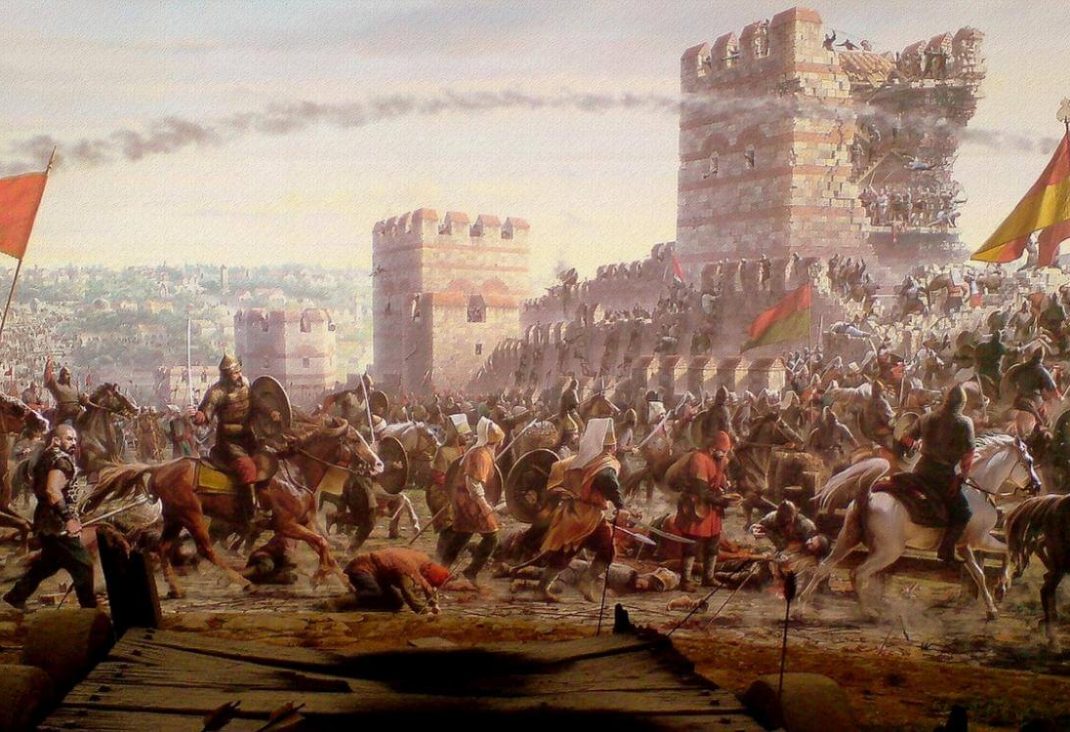First read the second chapter: The Ottoman Empire Chapter 2
The first major blow to the empire’s international reputation came with the Battle of Lepanto in 1571. Austria’s Don Juan led a Holy League that sank 200 of the 245 Turkish ships in an unprecedented naval demolition derby. Afterwards, the pace of Ottoman expansion slowed (Tunis in 1574, Azerbaijan 1576, Morocco 1578, and Crete 1669) and then reversed, with defeat at St. Gotthard (1664) followed by repulsion from Vienna by a Polish-led European coalition in 1683. (According to lore, two mainstays of continental cuisine emerged from the Ottoman siege of Vienna: coffee, which the retreating troops left by the sackful, and croissants, invented by Viennese bakers in the shape of the Turkish standard.) After this series of humiliating Ottoman defeats, the Treaty of Karlowitz (1699) surrendered much of their European territories. Russian empress Catherine the Great sought to liberate fellow-Orthodox nation Greece in 1770. Nearly a century of losses to Russia followed, slowing only with western intervention in the 1856 Crimean War.
While the Ottoman borders crumbled, the sultans ran down the empire like the proverbial cash cow. “Let us laugh, let us play, let us enjoy the delights of the world to the full.” wrote one court poet, summing up the mentality of the times. Sultan Ahmet III (1703-30) reigned over the Tulip Period, a brief aesthetic revival of the arts. Back in the real world, Ottoman provinces continued to gain increasing autonomy as power away from the crumbling authority of the Porte.
THE 19TH CENTURY: REFORM AND REACTION
Well-intentioned Selim III tried to stem the tide when he became sultan in 1789. His program, called Nizam-i-Cedid, or the “New Order,” concentrated on Westernizing the army. The Janissary corps, threatened by these new developments, deposed the sultan in 1807 and murdered him for good measure. By 1812, the picture for the Janissaries was grim. All territory north of the Black Sea was lost, Serbia and Greece had rebelled, and Egypt was becoming increasingly independent. Following their defeats of the Ottomans, Russia and Austria were authorized by treaty to intervene on behalf of non-Muslim Ottoman subjects.
Mahmut II succeeded Selim III with great caution. He spent 20 years waging disastrous wars abroad, meanwhile quietly appointing his followers to positions of domestic power. With strong backing assembled by 1826, Mahmut II eliminated the havoc wreaking Janissaries and their supporters by burning them alive in their barracks (the “Auspicious Event”). Next, he established a secular bureaucracy to effectively replace the ulema, or traditional Islamic leadership
Mahmut II had set the stage for the Tanzimat (reorganization). Begun in 1839 by sultans Abdülmecld I and Abdiilaziz, it revamped the army, freed education and media, reduced tax corruption, and changed the administration of the provinces.



Leave a Reply